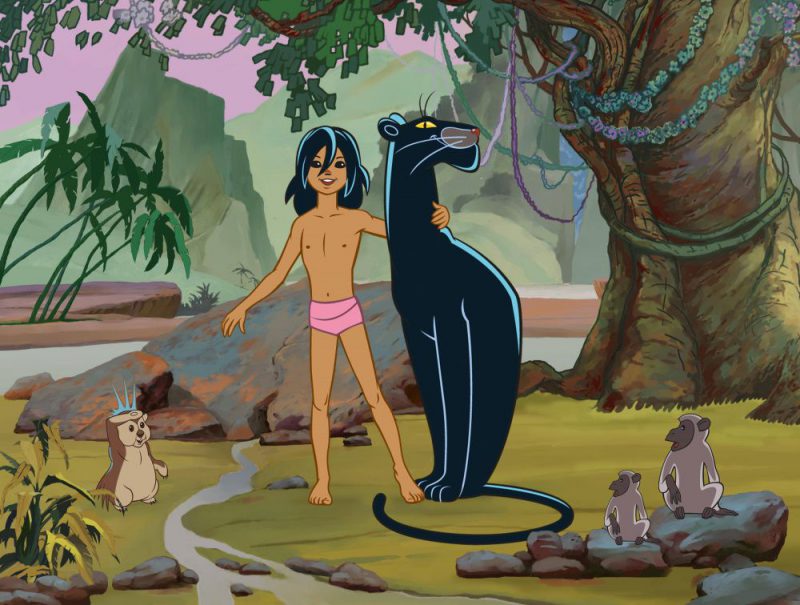Russian versions of world-famous stories: Mowgli
Today we start a series of articles dedicated to the Russian versions of world-famous stories and how are they differ from the original. This first article tells you the story of Mowgli.

The Russian cartoon, based on the “Book of Jungle” by Rudyard Kipling, was directed in 1967—1971 by Roman Davydov. Initially, it was a series in 5 episodes, but in 1973 they were put together in one single long cartoon.
So how does the Soviet Mowgli differ from its American counterpart? Well, a lot.
The first thing that catches your eye is: while in the American version everyone sings and dances, the Soviet cartoon – made in the harsh style of Soviet realism – has a deep meaning and is emotionally strong. Besides, the Soviet adaptation came out closer to Kipling’s book.
The Soviet story of Mowgli teaches the ideas of friendship and mutual assistance. Each character in the team plays on his own strength. For example, Kaa does not get involved in the battle, but he is wise and offers strategic solutions. Bagheera (who is female in the Russian version) is an example of an alpha woman: not only is she strong and dangerous on one side, graceful, tender, playful, and spontaneous on the other, she is also savvy and wise. Baloo is an excellent teacher. Akela is a wise and fair leader. The wolf-mother is ready to give her life for an adopted child. Shere Khan is strong, ferocious and cunning; he does not play by the rules and in the end gets what he deserves. The jackal is full of fear and, perhaps, the most disgusting character in the story. All the characters are mature, charismatic and clearly fit in perfectly in the jungle.
The Soviet cartoon teaches to be honest and strong, and to play on the bright side, because the dark side will surely be defeated. Often the characters go to their deaths and are ready to fight until the end for what was dear to them, and fate rewards them for their courage: the situation gets resolved either peacefully or in their favor.
Unlike the American version, where Mowgli remains a child, the Soviet Mowgli is growing and developing over the cartoon’s five episodes. Step by step he reveals his strengths and understands who he is. He becomes stronger, smarter, faster. He becomes the leader of the pack, defeats the invasion of enemies, receives a dagger, and defeats the tiger with his bare hands. In the beginning, he is just a child in the learning, but with time he becomes independent, makes his own decisions. He is active, initiative and savvy. He behaves bravely and with dignity. He respects his brothers, protects them, and hears their wisdom. They support each other and act together.
The Soviet cartoon teaches us about a strong, courageous, brave, savvy independent person who sets goals and achieves them. A person who uses the power of friendship and collective, who takes into account the strengths of allies and enemies and acts boldly and effectively.
If you are interested in watching the Soviet take on Mowgli, here is a version with Russian subtitles: link in YouTube





